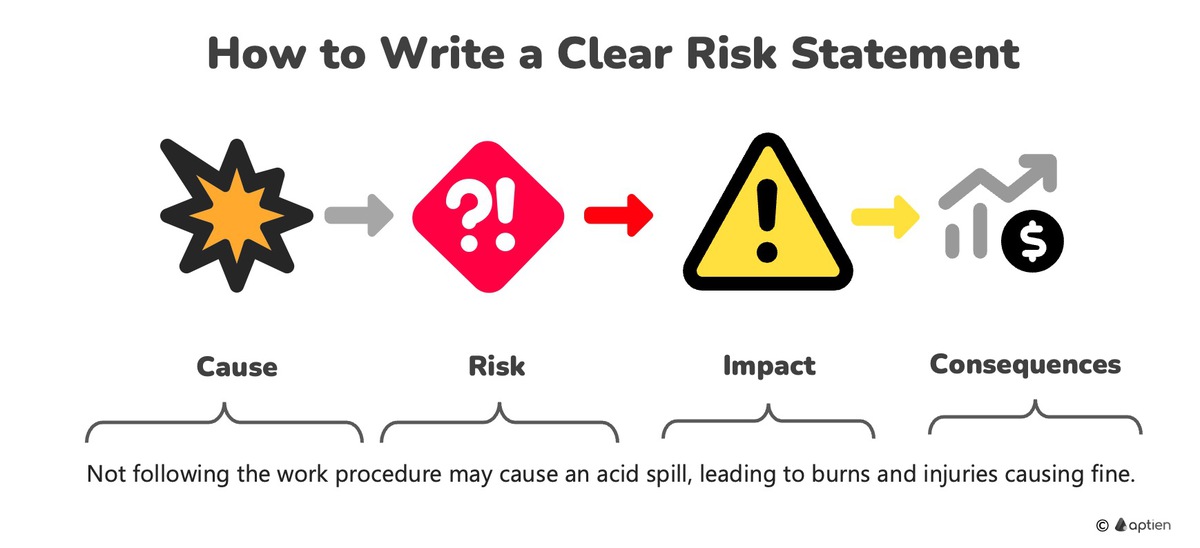What is a Risk Statement?
- A risk statement is a clear, simple description used to name and explain a potential problem or threat to your business. It tells anyone reading it exactly what could go wrong and why it matters.
- Well-written risk statements make it easier to understand issues, prioritize actions, and make better decisions—helping you protect time, money, and operations.
- Poorly written statements can cause confusion, bad decisions, and unnecessary costs or disruption.
How to Write Effective Risk Statements for Your Business
First, make sure you can tell the difference between the risk itself, what causes it, and what impact it would have. That clarity helps avoid confusion and makes it easier to manage priorities across your small or mid-sized business.
An effective risk statement clearly spells out three parts:
- The Cause: What could trigger the problem or why it might happen (e.g., outdated software, supplier failure, human error).
- The Risk Event: The specific undesirable event that could occur (e.g., data breach, production stoppage, delayed shipment).
- The Business Impact: The concrete consequence if the event happens (e.g., lost revenue, customer churn, regulatory fines, reputation damage).
When you write risks this way, your team and stakeholders get a clear, actionable picture. For example:
"A ransomware attack on Server 1 could halt the production line, causing an estimated daily revenue loss of $530,000."
How to Log Risks in Your Risk Register
- Open your Risk Register.
- Add a new risk entry.
- Enter a short summary of the risk as the Risk Name or Title.
- If the risk has more details, use the 'Description' or 'Details' field to record the full information.

